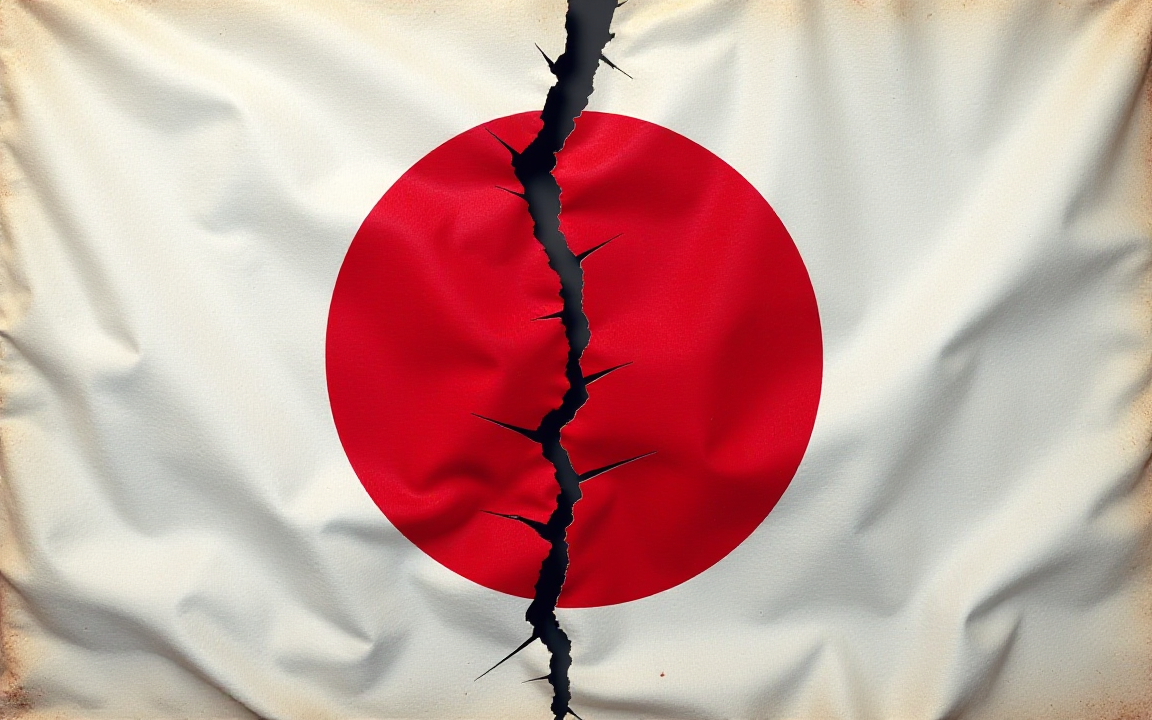
Japan’s market is rallying, but its economy says it may be short-lived
Japan’s stock market is surging. The Nikkei 225 is up over 3% on Wednesday morning and just hit a 52-week high.
Exporters like Toyota, Sony, and Honda are rallying. Investors are cheering a new trade deal with the US and the expected resignation of Prime Minister Shigeru Ishiba.
But look a little deeper, and the signs are pointing towards a different message. One that says this rally is built on sand.
Japan’s economy isn’t entering a new era of confidence. It’s entering a new phase of risk. And the bond market sees it first.
Is Japan losing control of its bond market?
The warning signs are clear. On July 23, the government held a 40-year bond auction. It was the weakest in 14 years.
According to Bloomberg, the bid-to-cover ratio, which measures demand, came in at 2.127, the lowest since 2011. Yields spiked to a record 3.375%.
But this was not a surprise. Investors have been retreating from the long end of the Japanese Government Bond (JGB) curve for months.
Yields on the 30-year bond had already surged to 3.20% earlier in the week.
The curve is steepening fast. The market is demanding higher premiums to lend to Japan over the long term.
Domestic buyers like life insurers and pension funds, once reliable participants, are pulling back.
The Ministry of Finance has responded by trimming long-bond issuance, although it hasn’t helped.
The issue is not just technical. It’s also political. Bond traders are pricing in future instability.
The market is asking a basic question: who will be in charge, and what will they spend?
Why Japan’s political shakeup matters now
Prime Minister Shigeru Ishiba lost his upper house majority in a humiliating election setback. Days later, local media reported he plans to resign.
Although Ishiba denied these reports, one can now tell that for a country built on quiet continuity, all of this indicates that something’s changed.
His coalition’s defeat has empowered opposition parties pushing for aggressive tax cuts and spending.
Sanseito, a populist party with Trump-style messaging, jumped from one to fifteen seats.
The Democratic Party for the People wants the Bank of Japan to return to easy money. Fiscal expansion is suddenly back in style.
The LDP, Japan’s ruling party, is scrambling to find a new leader. The candidates could not be more different.
Sanae Takaichi supports looser policy and visits the controversial Yasukuni Shrine.
Shinjiro Koizumi has youth appeal but is unpredictable. Yoshimasa Hayashi, a Harvard graduate, represents continuity but lacks spark.
The outcome will be critical. Not just for politics, but for markets. Investors are watching to see if Japan will pick a steady hand or veer into populist territory that further damages confidence.
Has the trade deal changed anything?
On July 22, the market got a surprise: the US and Japan announced a new trade agreement.
Instead of the expected 25% tariffs, the US settled for 15%. Additionally, Japan promised a $550 billion investment in the US.
Equities soared on the day. The Nikkei 225 and Topix jumped more than 3% into new 52-week highs. The yen briefly strengthened, then faded.
But this was a relief rally, not a turning point. Investors had priced in something worse. What they got was less bad.
The fundamental problems have not been eliminated yet.
Export margins will still be hit. And the boost to equities has not calmed the bond market.
Can the Bank of Japan afford to stand still?
The Bank of Japan has already started to tighten. It has cut back on bond purchases.
It raised rates in January this year, and another rate hike is expected by autumn. But July came and went without action.
Deputy Governor Shinichi Uchida gave a conservative speech. He mentioned that inflation was running hotter than expected.
He warned about the risks. He requested patience. But he gave no clear direction.
The BOJ is stuck. Raise rates, and risk a sharper sell-off in bonds. Stay loose, and the yen could fall while inflation expectations drift higher.
Either way, the BOJ is no longer in control of the narrative; the markets are.
Traders are watching the long end of the curve instead of policy statements. Yields are speaking louder than words.
Why won’t this rally last
There are moments when different asset classes tell different stories. When they do, you have to decide who’s telling the truth.
Right now, equities are telling a story of short-term relief while bonds are telling a story of long-term breakdown.
But Japan’s economy still faces a ballooning debt-to-GDP ratio of 250%, weak wage growth and declining real incomes, a shrinking workforce and fading demographic tailwinds, political instability with no clear successor and a bond market that is losing its domestic base.
Unless Japan’s next prime minister restores fiscal credibility fast, this moment of calm will not hold. The political vacuum that Japan’s economy finds itself in is not yet priced in.
Long-term investors have already stepped back. They are demanding higher yields. More compensation. Less trust.
That’s the deeper message of this week’s market action.
It’s not about who wins the LDP leadership but about whether Japan, as a system, still deserves a premium on its debt.
The post Japan’s market is rallying, but its economy says it may be short-lived appeared first on Invezz
